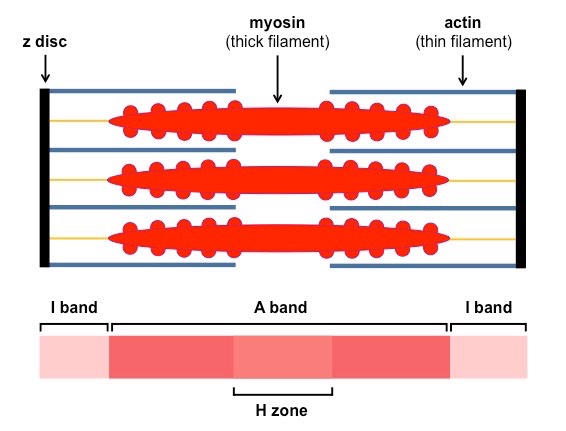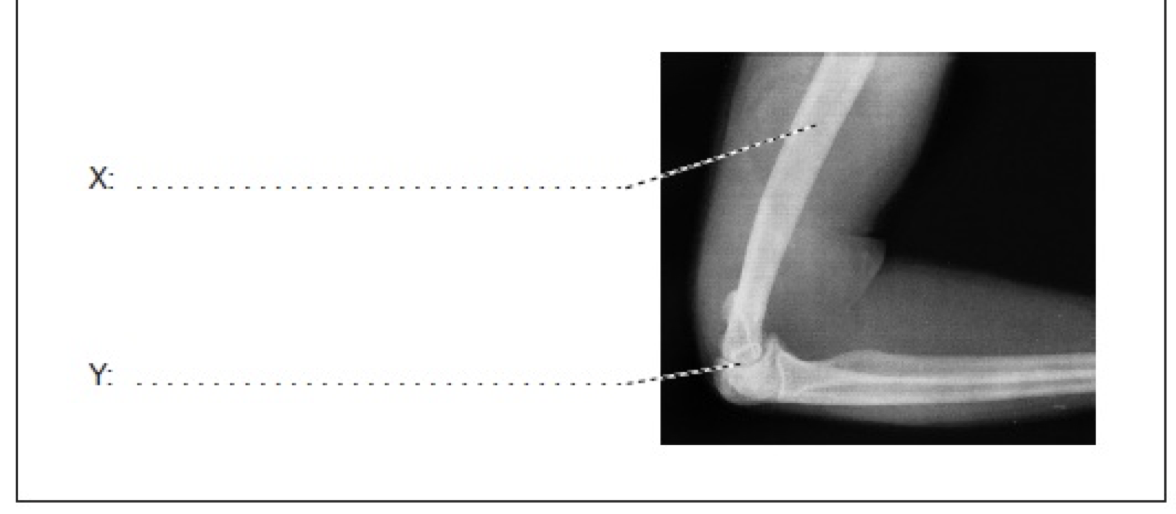Unit 5 IB Bio HL Review
1/41
Earn XP
Description and Tags
neurotransmitters, muscle contraction, kidney function, and plant signaling. questions from chatgpt and http://dougjorgensen.weebly.com/uploads/2/1/9/1/21915934/chapter_11_-_animal_physiology.mark.pdf
Name | Mastery | Learn | Test | Matching | Spaced |
|---|
No study sessions yet.
42 Terms
What is the role of acetylcholine (ACh) in the nervous system?
Muscle contraction at the neuromuscular junction (excitatory) and slows heart rate by binding to muscarinic receptors in the heart (inhibitory).
How does dopamine act as an excitatory and inhibitory neurotransmitter?
Excitatory in the mesolimbic pathway (reward system, pleasure). Inhibitory in the basal ganglia (motor control, regulation of movement).
Is serotonin excitatory or inhibitory?
Excitatory in mood regulation (brainstem), inhibitory in relaxation and sleep (medulla).
What is the main function of GABA in the brain?
GABA is the primary inhibitory neurotransmitter that reduces neuronal firing, leading to relaxation, muscle tone regulation, and calming of the nervous system.
What is the role of glutamate in the brain?
Glutamate is the main excitatory neurotransmitter, involved in learning and memory by facilitating synaptic plasticity.
What is the difference between excitatory and inhibitory neurotransmitters?
Excitatory neurotransmitters = increase the likelihood of an action potential
Inhibitory neurotransmitters = decrease the likelihood of an action potential.
How is acetylcholine (ACh) cleared from the synapse?
ACh is broken down by the enzyme acetylcholinesterase into acetate and choline, which prevents continuous stimulation of the postsynaptic cell.
How is dopamine cleared from the synapse?
Dopamine is reabsorbed by dopamine transporters and degraded by the enzyme monoamine oxidase (MAO).
How is serotonin cleared from the synapse?
Serotonin is taken back into the presynaptic neuron by serotonin transporters. It can be broken down by monoamine oxidase (MAO).
How is GABA cleared from the synapse?
GABA is taken back into the presynaptic neuron via GABA transporters and is broken down by enzymes such as GABA transaminase.
How is glutamate cleared from the synapse?
Glutamate is reabsorbed by glutamate transporters in the presynaptic neuron and glial cells. Excess glutamate can be broken down into glutamine for recycling.
Explain the process of muscle contraction [7 marks]
Action potential reaches the neuromuscular junction and triggers the release of acetylcholine (ACh).
ACh binds to receptors on the muscle cell membrane, triggering an action potential in the muscle fiber.
The action potential travels down the T-tubules, stimulating the release of calcium ions (Ca²⁺) from the sarcoplasmic reticulum.
Ca²⁺ binds to troponin, causing a conformational change in tropomyosin, which exposes the binding sites on actin.
Myosin heads bind to actin and perform a power stroke, pulling the actin filament towards the center of the sarcomere.
ATP binds to myosin, causing it to release actin and reattach further along the filament.
The cycle repeats, causing the muscle to contract until the signal stops and Ca²⁺ is pumped back into the sarcoplasmic reticulum.
What is the role of the Bowman’s capsule in the kidney?
Filtration of blood. It surrounds the glomerulus, where blood pressure forces water, ions, and small molecules into the renal tubule, forming glomerular filtrate.
What happens in the proximal convoluted tubule (PCT) of the kidney?
Most of the water, glucose, and ions are reabsorbed into the bloodstream by active and passive transport, returning essential substances to the body.
What is the function of the Loop of Henle?
Establishes a countercurrent multiplier system that helps concentrate urine and conserve water by creating a high concentration of solutes in the medulla, allowing water reabsorption in the descending limb.
How does the kidney regulate water balance?
The kidney adjusts the amount of water reabsorbed in the distal convoluted tubule and collecting duct based on the body’s hydration status. ADH (antidiuretic hormone) increases water reabsorption when the body is dehydrated.
What is the role of auxin in plant signaling?
Plant hormones that promote cell elongation, allow for phototropism and gravitropism, helping plants grow towards light and gravity.
What is phototropism?
Growth of a plant towards or away from light, regulated by the hormone auxin. Cells on the darker side of the plant elongate more, causing the plant to bend towards the light.
What enzyme breaks down acetylcholine (ACh) in the synaptic cleft?
Acetylcholinesterase breaks down ACh into acetate and choline.
What is the main function of dopamine in the brain?
Reward processing, mood regulation, and motor control
Which type of neurotransmitter is GABA?
GABA is the primary inhibitory neurotransmitter in the central nervous system.
What is the primary function of glutamate in the brain?
Main excitatory neurotransmitter, involved in synaptic plasticity and learning.
Name two common excitatory neurotransmitters.
Glutamate and acetylcholine (ACh)
Name two common inhibitory neurotransmitters.
GABA and dopamine (in certain pathways)
What is the first step in muscle contraction after an action potential reaches the neuromuscular junction?
The action potential triggers the release of acetylcholine (ACh), which binds to receptors on the muscle cell membrane.
What happens after acetylcholine binds to the muscle cell membrane during muscle contraction?
The binding of ACh triggers an action potential that travels along the muscle fiber and into the T-tubules.
How does the release of calcium ions (Ca²⁺) contribute to muscle contraction?
The action potential causes the release of Ca²⁺ from the sarcoplasmic reticulum, which binds to troponin, causing tropomyosin to shift and expose binding sites on actin.
What happens when the myosin heads bind to actin?
The myosin heads perform a power stroke, pulling the actin filament toward the center of the sarcomere, causing contraction.
What is the role of the glomerulus in kidney filtration?
The glomerulus filters blood, pushing small molecules (like water, glucose, ions) into the Bowman’s capsule to form glomerular filtrate.
What is the main function of the descending limb of the Loop of Henle?
The descending limb is permeable to water, allowing for water reabsorption into the surrounding tissues due to high osmolarity.
How does antidiuretic hormone (ADH) regulate water reabsorption?
Increases the permeability of the collecting duct to water, allowing more water to be reabsorbed into the bloodstream when the body is dehydrated.
How does the kidney help in osmoregulation?
The kidney maintains water and solute balance by adjusting water reabsorption and ion concentrations in response to changes in blood osmolarity.
Why is glutamate considered excitatory?
Glutamate binds to NMDA receptors and allows Na⁺ and Ca²⁺ to enter the postsynaptic neuron, promoting depolarization and the initiation of an action potential.
Why is GABA considered inhibitory?
It binds to GABA-A receptors, causing chloride ions (Cl⁻) to enter the neuron, making the inside of the cell more negative and preventing an action potential
How do you calculate percentage change?
Percent Change = ((New Value — Old Value)/Old Value) x 100
Ex: The population of a species in a forest was 500 last year, and this year it has increased to 650.
Find the difference between the new and old values:
650−500=150
Divide by the old value:
150/500=0.3
Multiply by 100 to get the percentage:
0.3×100=30%
Percent increase in population is 30%.
How to calculate actual length?
Actual Length= Measured Length on Image / Magnification
Ex: A micrograph of a cell is shown with a magnification of 500x. The measured length of the cell in the image is 10 mm.
Step 1: Apply the formula
Actual Length=10 mm/500
Step 2: Solve
1 mm = 1000 µm
or
1 µm = 0.001 mm
Actual Length = 0.02 mm x 1000 = 20 µm
Explain how a ligand can affect gene expression in a cell. (6 marks)
A ligand affects gene expression by binding to a specific receptor, either intracellular or on the cell membrane, triggering a signal transduction cascade. This activates a transcription factor, which binds to promoter or enhancer regions of DNA, regulating mRNA transcription. As a result, protein synthesis is altered, leading to changes in cell function. Examples include steroid hormones directly affecting transcription and epinephrine triggering a signaling cascade.
A skeletal muscle contains bundles of elongated muscle fibre cells. What is the longest structure within each fibre?
Myofibril
Label a diagram of a sarcomere
Actin: A thin filament that contains binding sites for myosin heads, allowing cross-bridge formation during contraction. It slides past myosin to shorten the sarcomere.
Myosin: A thick filament with heads that bind to actin, forming cross-bridges and pulling actin filaments inward to generate contraction.
Z disc: The boundary of a sarcomere where actin filaments are anchored. It moves closer together during contraction as the sarcomere shortens.
I band: The light region containing only actin filaments. It shortens during contraction as actin and myosin overlap more.
A band: The dark region where myosin filaments are present, including the overlapping region with actin. It remains the same length during contraction.
H zone: The center of the A band, containing only myosin filaments (no actin). It shortens or disappears during contraction as actin filaments slide inward.


Label structures named X and Y
X: humerus
Y: synovial fluid/cartilage/joint capsule/elbow joint
Explain the role of calcium in muscle contraction [3 marks]
An action potential triggers the release of calcium from the sarcoplasmic reticulum. Calcium binds to troponin, causing a conformational change that exposes binding sites on actin. This allows myosin heads to bind to actin and push it inward, leading to muscle contraction.
Explain the role of ATP in muscle contraction [3]
Breaks cross-bridges (between myosin and actin)
Cocks myosin heads
Provides energy to move actin